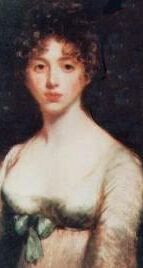There are not too many ways of which we can think to reach mastery in your field and win the love of the world. Lord Byron provides one.

George Gordon Byron is probably best known today as a leading poet in the British Romantic movement. Along with his great talent for writing, however, he also possessed a number of sensational qualities that created an enigmatic aura around him that irresistibly compelled everyone with whom he came into contact. Byron in his youth through travel became a worldly man; at times he presented himself as a loudly and passionately opinionated public figure; he was a notorious and, to say the least, a seasoned lover; and he was arguably the world’s first true celebrity. Studying like Lord Byron can certainly get you very far in life, and quickly. If his methods strike you as valid, you may consider taking note of the following steps:
1. Roll with the punches
For the high status Byron was able to achieve, you might think he had a fairer start in life. Actually, he was born to a family of a poorer background, on 22 January, 1788 in Aberdeen, Scotland, with a deformed foot that left him limping, self-conscious, and resentful for the rest of his life. His father left the family when Byron was one year old to frolic in France with a mistress, possibly leaving his impressionable young son with a distorted first impression of a man’s proper social role. Byron’s mother was no great help, either. A little hysterical and teetering on the verge of mental instability, she alternated between smothering Byron with attention and leaving him neglected. When Byron was just three years old, his father died and Byron inherited a gross fortune amounting to a pile of debt. But did any of this stop Byron?
It took another death of a close family member for Byron’s luck to take a turn for the better. When his uncle passed away, Byron gained control of the majestic estate of Newstead Abbey and became a baron at the ripe old age of ten.
But even in this Byron shirked the traditional route of revelling in his fortunes; for at the beginning of adolescence he discovered it was not just women he was attracted to. Without anyone to provide him with proper guidance, Byron carefully withdrew to the dimmer peripheries of society for a few years.

2. Throw a few punches of your own
Byron enrolled in the University of Cambridge in 1805. There he could no resist falling in with the welcomingly jubilant crowd, allowing himself to mingle, party, drink and gamble. Enjoying himself for the first time in more than – well, ever – Byron must have found any interjection by academia the greatest of nuisances. Though he was probably aware that retribution documented in writing is often a delicate matter, Byron used his first collection of poetry, Fugitive Pieces, to juxtapose bitter disparagement of his professors with explicitly depicted erotic subjects, justifying it perhaps by the sheer wit into which the inspired irreverence would have translated. Needless to say, he did have to retract the work, undoubtedly with more than a few expletives on his part in private; but it seems we can safely conclude that this was yet another case in which the process of writing helped heal a troubled writer.
Byron went on to publish a second collection of more sober poems, Hours of Idleness. But to his dismay even this was met by an array of negative reviews. Yet while some poets might consider initial failure an indication of the need to further cleanse their thoughts and skill, the notion did not strike Byron at all. Like any self-respecting writer, he wrote and published a riposte entitled English Bards and Scotch Reviewers, in which he gave a long succession of examples of past English poets who had been unreasonably maligned by Scottish critics and gone on to prove themselves masters of their craft – yes, Sir! Surprisingly, this work did rather well; but Byron apparently could not have cared less. He had more important things to do than worry about what people thought of him: namely, calmly making arrangements to leave the country as a solemn defender of the freedom of expression. And not a moment too soon.
3. Take some time off for yourself, recover, grow
As we have seen, studying like Byron is not without its fair share of stress. On this path, you will have to find ways to unwind from the multiple battles you will be waging simultaneously. After graduating from Cambridge, for instance, Byron returned home and sought the aid of women for exactly this; and so eager to help him were they that one of the maids produced what would be his first extramarital child. Even though he surely would have been overjoyed at the news, Byron nevertheless thought he needed some time to himself. With a group of friends he left for the mainland of Europe, and later continued to Asia Minor, to conduct the traditional Grand Tour. The entire time, however, in tandem with seeing new aspects of the world, he devoted himself to sorting through his personal issues as they came under scrutiny in each new locale. Now this was honest inspiration: combining elements of world literature with a personal treatment of his encounters with unfamiliar places and cultures (a revolutionary method for his time) Byron produced one of his most famous works, Child Harold’s Pilgrimage, a poem which not even the harshest of critics could deprecate.
4. Make a bold entrance
Having left with a cheap shot, Byron could now return to England with every bit of dignity he had earned. Upon publishing the first two cantos of Child Harold’s Pilgrimage, Byron is said to have mused, “I awoke one morning and found myself famous”. The first set of five hundred copies had sold out in a matter of three days. People wanted to know more about the mysteriously perceptive new author, and society was quick to build up its hero. When money and popularity returned for a second time in his life, Byron already knew how to capitalise on them. He attended lavish parties where he would be perpetually surrounded by a thick throng of women eager to be entertained by him, and he made friends with influential people in society.
Everything was going smoothly until rumours of Byron peeked the interests of Lady Caroline, a married woman of status who probably should not have been so eager to meet Britain’s most eligible bachelor. Before she had so much as spoken to him, she concocted and started spreading the description that he was “mad, bad, and dangerous to know” – another fact which further implies she was not very mentally stable. When the two finally did meet, though, Lady Caroline was instantly infatuated with him. Byron was less than impressed with her. Nonetheless, he would have been willing to give her a serious chance had she been able to decide on eloping with him. Although she supported him financially, this step was apparently too radical for her; and Byron finally decided to end whatever sort of relationship they had when it began to weigh too heavily on his reputation.

5. Consolidate
For years Caroline would go on harassing Byron to get back together with her and stirring scandal after scandal. Not even the harsh proof Byron sent by letter that he was happily in a relationship with Lady Oxford could completely shatter Caroline’s delusions. Actually, to do this it cost Byron a marriage with her cousin Anne Isabella Milbanke. Confused, Caroline was for a while unable to leave him alone. The break was enough for Byron to get a grip on his life, clear his name, and resume writing and publishing yet more great works, including The Bride of Abidos, The Giaour, and The Corsair.
6. Do not tolerate a life unsuitable to your expectations
However, things were not so placid below the surface. Byron’s marriage to Anne bothered him. It was too perfect; she was too perfect; and he found her earnest attempts to convert him into a conventionally better man wholly intolerable. He started going out with friends late at night to drink more and more frequently. Even when his daughter, Augusta Ada, was born, he found little to draw him back home. Finally, Anne took the child and left Byron. To finalize the divorce, all she needed was concrete proof of his inadequacy; and emerging from the woodworks, Caroline was more than happy to provide it. It was enough that she spread the rumor, to this day of ambiguous credibility, that Byron had been sexually intimate with his half-sister Augusta Leigh, and that he was actually the real father of her daughter (the first soap opera?), to force Byron to sign the divorce papers. Afterward, his public life greatly disrupted, Byron left Britain for the second and final time in his life.
7. Make changes and explore your new world
Following his disgrace, Byron settled in Geneva, where he had the beautiful Swiss countryside for inspiration, and a new set of like-minded author friends, among whom were Percy Bysshe Shelley and his wife Mary Shelley. Yes, the very same: it was actually a challenge put forth by Byron to see who amongst them would write the best ghost story that inspired her to write her most famous novel, Frankenstein. Needless to say, she won. Byron, on the other hand, forfeited the competition to finish writing the third and fourth cantos of Child Harold’s Pilgrimage, and to copulate on the side with Mary’s step-sister, Claire Clairmont. Indeed, to study like Lord Byron presupposes mastery of time management.
It seems a lifestyle of making love with beautiful women and concurrently producing masterpieces suited Byron well, for he moved to Venice, where he produced Manfred and Beppo just in time to receive the news from Claire that she was pregnant with his lovechild.
8. Go out well
One might assume from all the activity and his writing around this period that Byron would have been getting along in years; but in fact he was only in his early thirties.
So late into the night,
Though the heart be still as loving,
And the moon be still as bright.
For the sword outwears its sheath,
And the soul wears out the breast,
And the heart must pause to breathe,
And love itself have rest.
Though the night was made for loving,
And the day returns too soon,
Yet we’ll go no more a roving
By the light of the moon.
Just as he was starting to feel like he would never find true love in his life, Byron fell head-over-heels with an Italian countess named Teresa Guiccilioli – another married woman. But by approaching in the guise of a family friend, he was able to get the Guicciliolis to invite him to live with them at Ravenna, where he continued to testify to his acute ability to balance his schedule by alternately making love with Teresa and writing his magnum opus Don Juan.
Emotional as any poet, and ever on the lookout to join any worthy fight, Byron even joined the Guicciliolis in providing support to the Carbonari in their revolution against the Austrians. The movement was suppressed, however, and Teresa was exiled to Pisa with her family. Since she had by then separated from her husband, Byron was thrilled to follow her there, even promising to conclude Don Juan at the fourth canto to have more time available to spend with her.
This period could be said to have been the happiest of Byron’s life. But, characteristically for a man who burned through life so quickly, it was not destined to last long. A particularly difficult year for Byron was 1822: his second daughter Allegra died of consumption, an illness otherwise known as tuberculosis, before Byron could live up to his intentions of being a real father to her, and his friend Percy Bysshe Shelley drowned at sea.

Byron sought to escape these bitter circumstances by going on a tour around Greece with Teresa; but there he was pulled into another revolution. When the Greeks requested his financial help in their fight for independence from the Turks, Byron reluctantly accepted the offer as a means by which he hoped to clear his reputation. However, the meetings and negotiations with the military officials took their toll on his health. Eventually, Byron suffered two seizures, which his doctors decided to treat by bleeding him; and when he recovered enough to go horseback riding in the country one day, he was caught in a violent rainstorm from which he fell ill with a severe cold. Again, the doctors bled him, this time proscribing him from even drinking water and eventually causing his premature death at the age of thirty-six. He was buried near Newstead Abbey and mourned by all the country.
The example of Byron’s life can be taken both as a way to go out well or badly, depending on the interpretation. What is beyond denial, however, is that in his short lifetime he achieved a tremendous variety of spectacular successes. To this day, Lord Byron remains a celebrated figure in British, Greek, and World History. Certainly, there are valuable lessons we can draw from his life if we are to learn how to study like Lord Byron.
Cover photo source: Wikimedia Commons, Public Domain








